
ONE OF EGYPT’S GREAT VISTAS, says archaeologist Miroslav Bárta, is the view from the top of the pyramid of the 5th Dynasty pharaoh Neferirkare in the necropolis of Abusir. On a clear day, you can see all the iconic monuments of Egypt’s Old Kingdom from there. Ten miles to the north are the Great Pyramids of Giza. To the south rise the Bent Pyramid at Dashur and the great pyramid complex of Djoser in the nearby necropolis of Saqqara. This majestic tableau on the Nile’s west bank is the most visible legacy of the Old Kingdom pharaohs of the 3rd through 6th Dynasties, who reigned from about 2649 to 2150 B.C. and were celebrated throughout Egyptian history. The monarchs of the 3rd and 4th Dynasties oversaw the creation of the country’s most massive pyramids and loomed large in the Egyptian historical imagination. But Bárta, head of the Czech Institute of Egyptology’s Abusir Mission, says that the true legacy of the Old Kingdom lies in the momentous social changes that occurred during the reign of the 5th Dynasty pharaohs. Their relatively modest pyramids in the necropolis of Abusir may be somewhat overlooked by tour groups today, but the discoveries made by Czech teams there since the 1960s have shown how radical changes instituted during the 5th Dynasty irrevocably impacted the trajectory of Egyptian history. “Abusir tells the story of a time when Egypt changed utterly,” says Bárta.
This story is from the {{IssueName}} edition of {{MagazineName}}.
Start your 7-day Magzter GOLD free trial to access thousands of curated premium stories, and 9,000+ magazines and newspapers.
Already a subscriber ? Sign In
This story is from the {{IssueName}} edition of {{MagazineName}}.
Start your 7-day Magzter GOLD free trial to access thousands of curated premium stories, and 9,000+ magazines and newspapers.
Already a subscriber? Sign In

ORIGINS OF PERUVIAN RELIGION
While investigating looters' holes at the site of La Otra Banda in northern Peru's Zaña Valley, archaeologist Luis A. Muro Ynoñán of the Field Museum and the Pontifical Catholic University of Peru spotted carved blocks around seven feet below the surface.
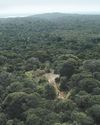
ISLAND OF FREEDOM
Many of the enslaved Africans sent to Brazil beginning in 1549 were from what is now Angola, where one of the most widely spoken languages was Kimbundu.
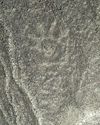
NAZCA GHOST GLYPHS
From the 1940s to the early 2000s, geoglyphs were discovered in the Nazca Desert of southern Peru depicting animals, humans, and other figures at the rate of 1.5 per year.

COLONIAL COMPANIONS
The ancestry of dogs in seventeenth-century Jamestown offers a window into social dynamics between Indigenous people and early colonists.
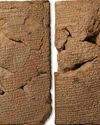
BAD MOON RISING
The British Museum houses around 130,000 clay tablets from ancient Mesopotamia written in cuneiform script between 3200 B.C. and the first century A.D.
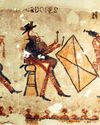
DANCING DAYS OF THE MAYA
In the mountains of Guatemala, murals depict elaborate performances combining Catholic and Indigenous traditions
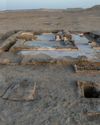
LOST GREEK TRAGEDIES REVIVED
How a scholar discovered passages from a great Athenian playwright on a discarded papyrus

Medieval England's Coveted Cargo
Archaeologists dive on a ship laden with marble bound for the kingdom's grandest cathedrals
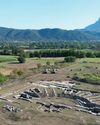
Unearthing a Forgotten Roman Town
A stretch of Italian farmland concealed one of the small cities that powered the empire
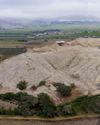
TOP 10 DISCOVERIES OF 2024
ARCHAEOLOGY magazine reveals the year's most exciting finds